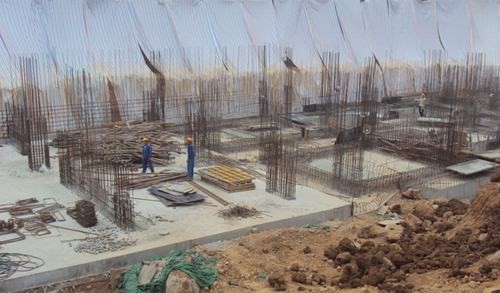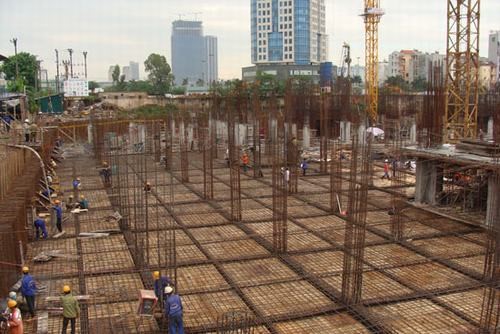Mistakes should be avoided when building foundations
The foundation of a building is one of the most important factors to be considered when building a house or other structures, as it is responsible for the function of directly loading the building into the ground to ensure that it can withstand the stresses of the building. floors. This is the decisive for solidity, sustainability and the foundation to support the whole project.
So to ensure the quality of the foundation, you need to note to avoid the following mistakes:
I. Incomplete geological survey
This is the first and very important step in the process of building houses, especially choosing the right type of soil category to plan the construction. Among the soils, sandy soil is the most ideal type to build houses, because it has the advantage of being tight and secure. The ability of self-cleaning of this soil is very high, so it rarely happens incidence of inclination.
There are several types of soil that need to be restricted from building: clay and porous soil:
Clay: With too tight soil structure and poor water absorption, it does not create an environment and good conditions for microorganisms to grow, reducing the ability of soil to self-clean. Therefore, when building on this ground, the house is often damp, standing water on the floor which makes easy for flies and mold.
Porous soil: This type of soil has a low bearing capacity, so it is prone to tilt and subsidence. Especially the water is often polluted, the waste water from living is stagnant below.

In addition, you need to avoid building houses in areas where the groundwater level is too high, causing high humidity. The underground water circuit is as low as possible, the water level is at least 0.5 m lower than the foundation to help avoid the problem of damp, cold, inclined floors and limit water source pollution
II. Inappropriate design
Currently there are many different types of the foundation designs and suitable for each type of house. Therefore, before conducting construction, homeowners and construction units must survey and propose the most appropriate plan. Here are some common types of foundation you can refer to:
Shallow foundation: Shallow foundation is the foundation built on the excavated pit, then backfilled, the depth of foundation about 2-3m, in special cases can be as deep as 5m. This type of foundation is used for construction of small and medium scale (usually Deep foundation: Calculate the design depth, then bring the foundation to the right depth, used for works with large tonnage, this type of foundation should not be built in areas with large groundwater.
III. Construction is not guaranteed
Building the foundation is not guaranteed will lead to many serious harms such as: cracking of concrete floors, infiltration of floors, subsidence … Therefore, to ensure the quality of the works, attention should be paid to careful research, calculation and scientific design

IV. Poor quality materials
The selection of materials plays an extremely important role for building the foundation. Materials such as iron, sand, stone, cement … must be guaranteed to be of the best quality. Therefore, you must be careful in the process of choosing construction materials.
V. Inexperienced contractors.
Currently there are many construction units with many different prices. Before deciding to choose a contractor, you need to find out the information and reputation of that contractor through the actual works they have constructed. This is a useful source of information to help you assess the competence and reputation of the contractor.
In addition, the owner can also hire a third unit to independently advice as well as supervise the construction of the foundation.









